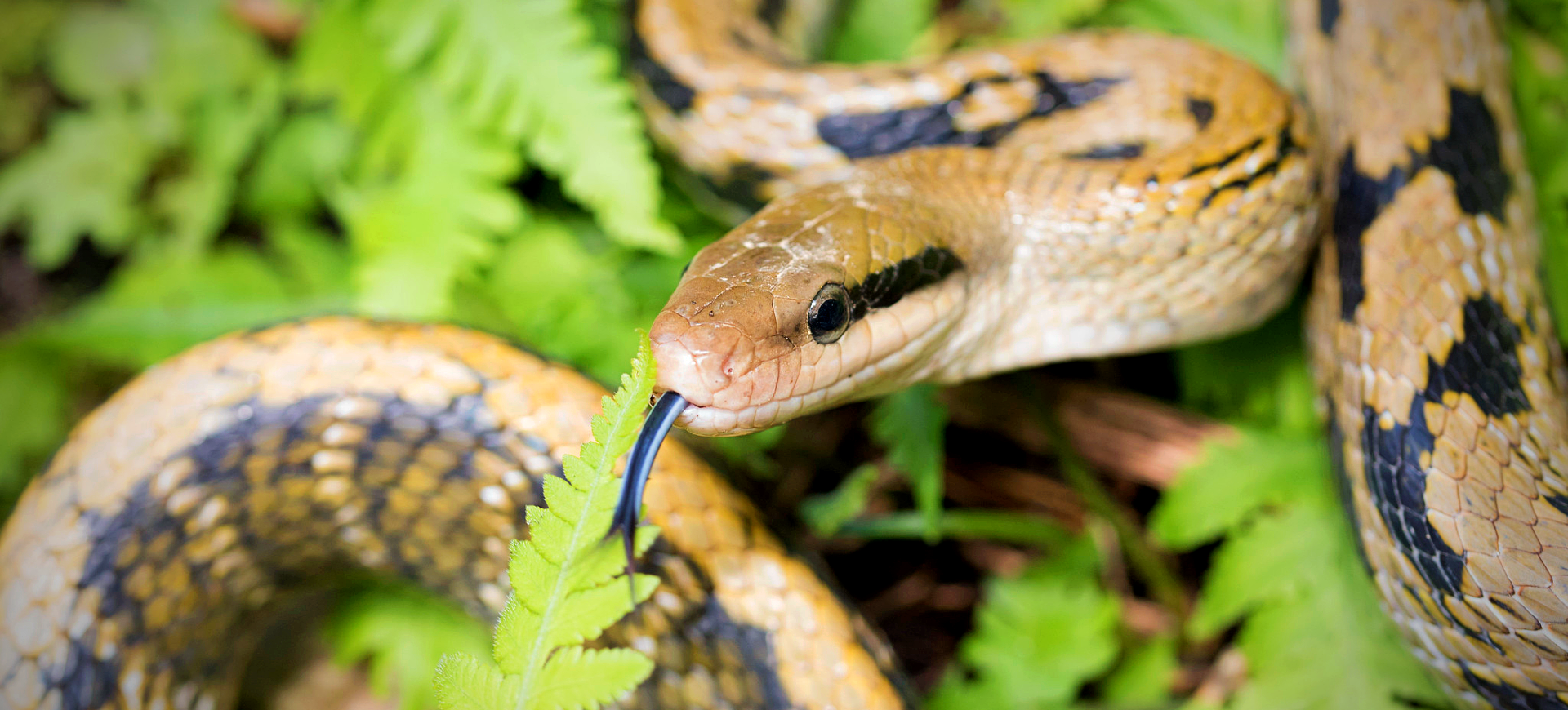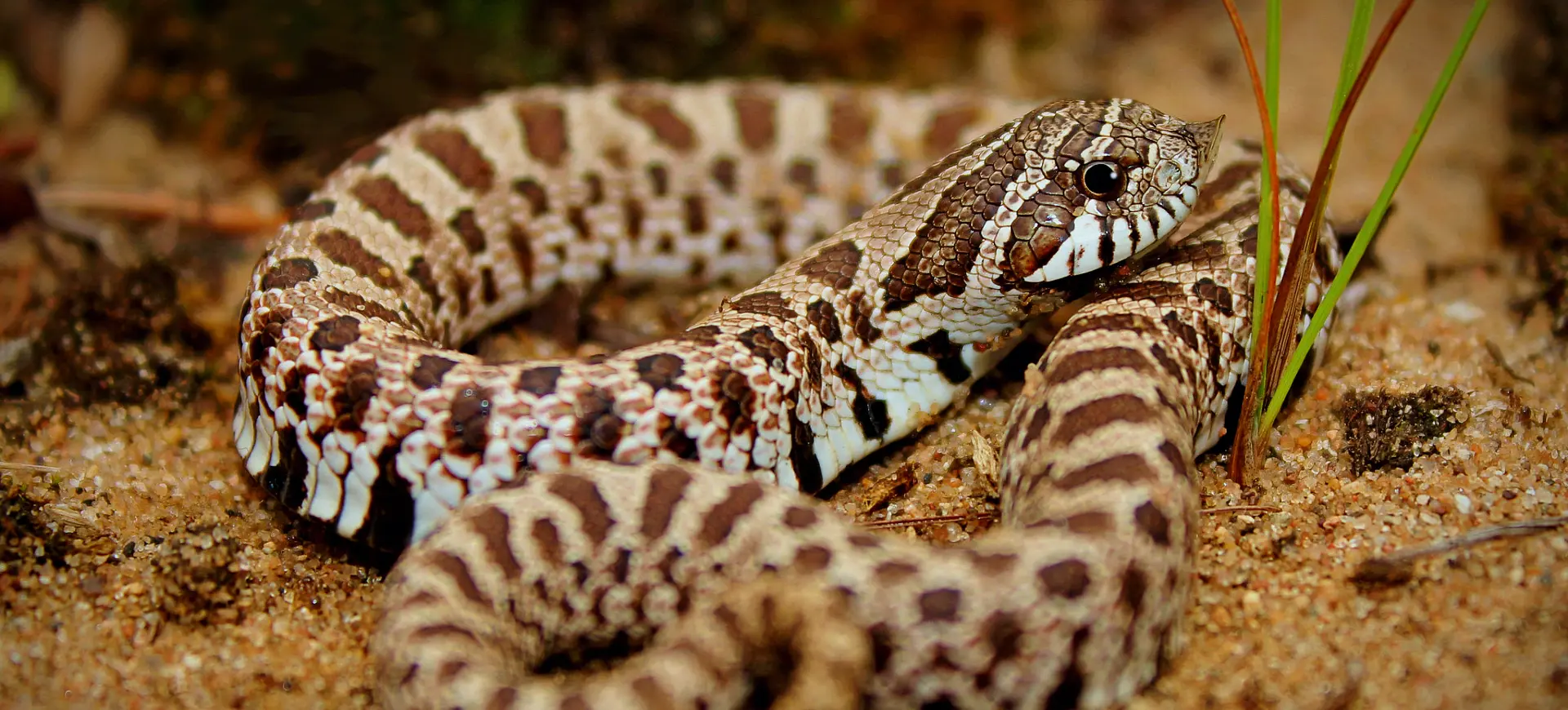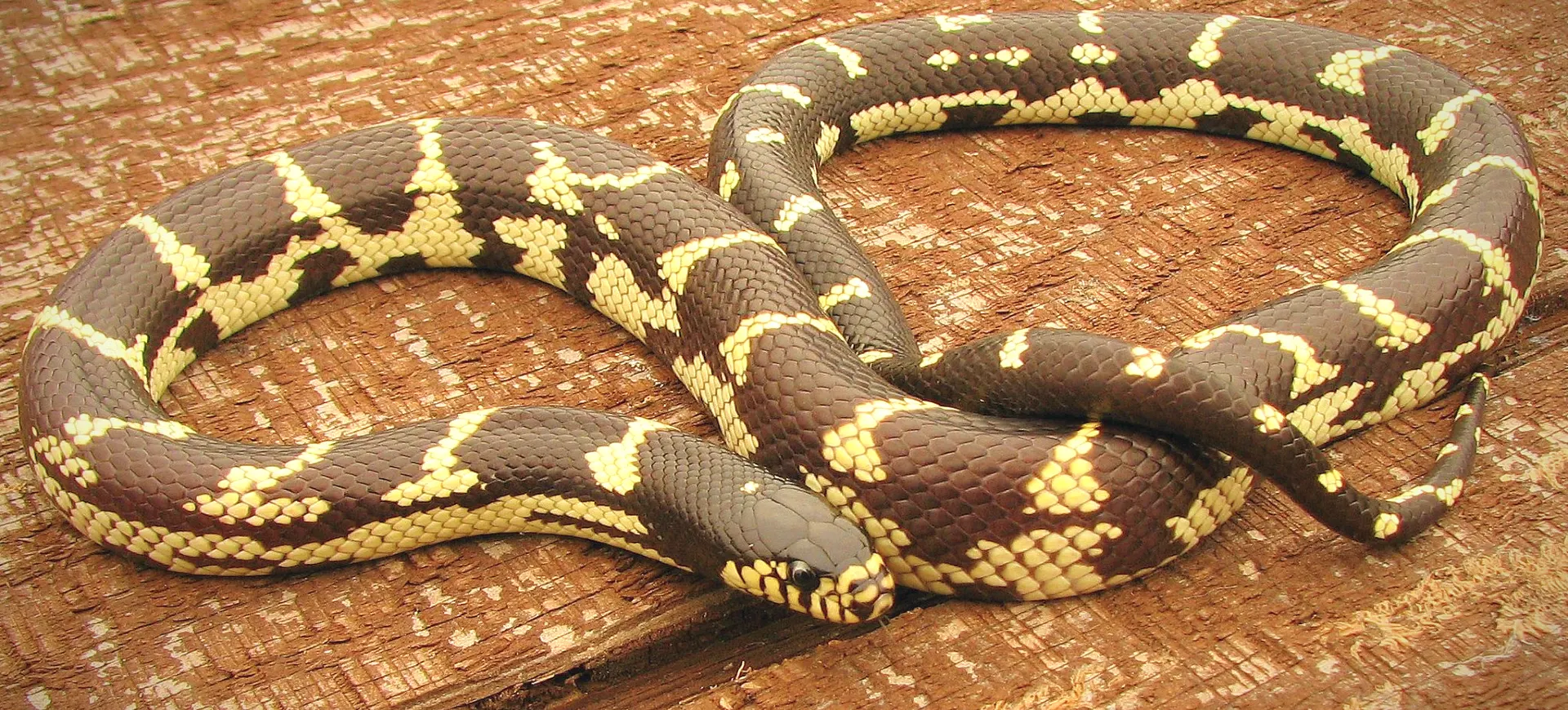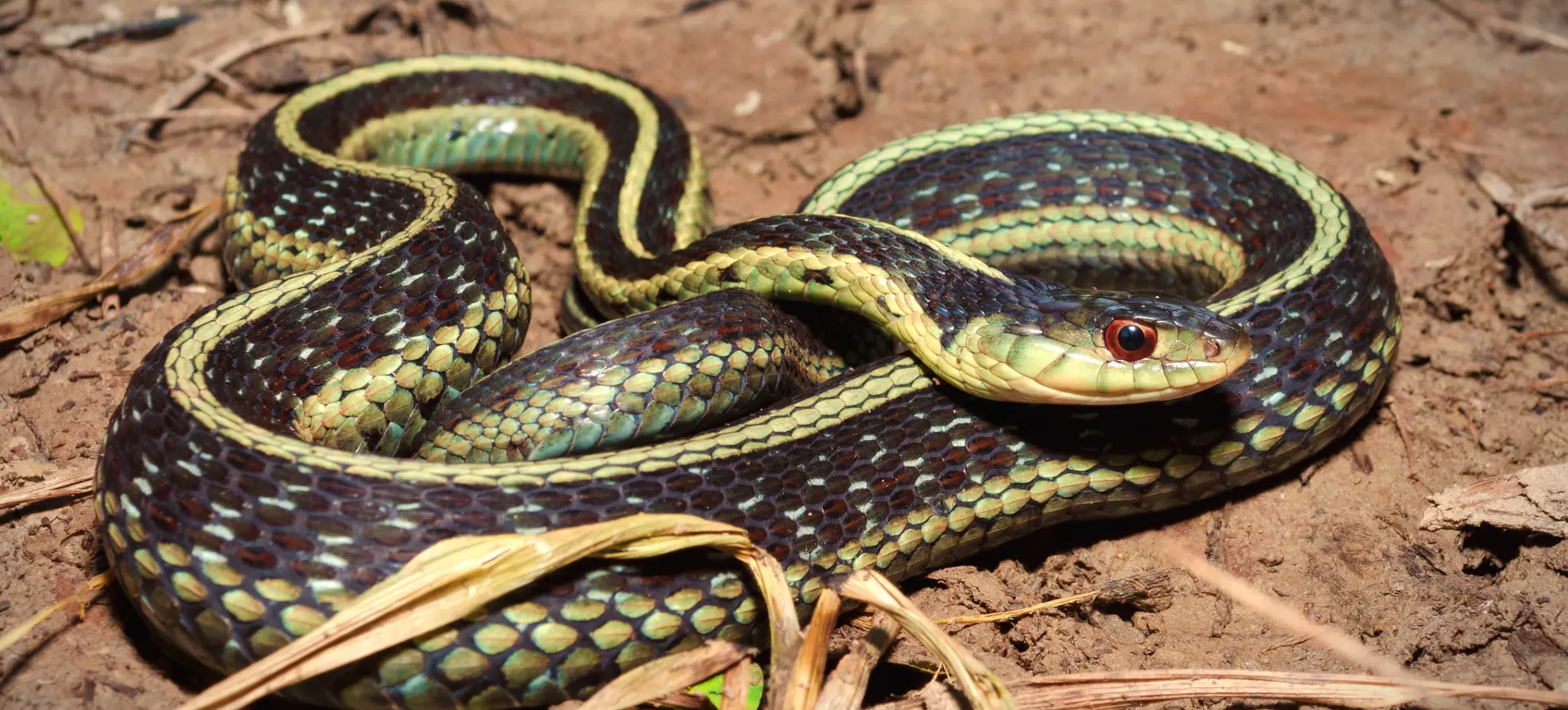Overview
The Pacific Gopher Snake, a subspecies of the gopher snake, is a non-venomous colubrid native to the western United States. It is known for its ability to mimic the behavior of rattlesnakes when threatened, making a hissing noise and flattening its head to deter predators. This species plays a vital role in its ecosystem as a natural predator of small mammals, birds, and reptiles, helping to control rodent populations. Although often mistaken for rattlesnakes due to their similar coloration and defensive behavior, Pacific Gopher Snakes are harmless to humans.
These highly adaptable snakes can thrive in a variety of habitats, including grasslands, forests, and agricultural areas. They are primarily terrestrial but are also capable climbers and may be seen basking on rocks or low vegetation. Pacific Gopher Snakes are diurnal, most active during the day, although they may become more nocturnal in hot weather to avoid extreme temperatures. Their solitary nature means that they are usually found alone except during the mating season or when brumating in communal dens during the winter months.
The Pacific Gopher Snake is recognized for its distinctive coloration, typically yellow or tan, with dark brown or black blotches running down its back. These markings can vary significantly depending on the environment, which helps them blend into their surroundings. Despite their intimidating defensive displays, these snakes are generally docile and often kept as pets when handled carefully. In the wild, they play a crucial ecological role by keeping rodent populations in check, which benefits both natural ecosystems and agricultural areas.
Taxonomy
Kingdom
Phylum
Class
Order
Family
Genus
Species
Sub Species
Type
Current distribution:
The Pacific Gopher Snake is distributed along the west coast of the United States, from California up through Oregon and into parts of Washington. Its range extends inland to include parts of Nevada, Idaho, and Utah, where it inhabits similar environments. It is particularly common in the coastal areas of California, where the climate and habitat diversity are favorable for its survival. These snakes are adaptable and can be found at elevations ranging from sea level to over 8,000 feet (2,438 meters).
The distribution of Pacific Gopher Snakes overlaps with several other gopher snake subspecies, and they can sometimes be found in hybrid zones where ranges meet. Although they are primarily found in the United States, there are reports of them extending slightly into northern Mexico. Urban expansion and habitat changes have caused shifts in their distribution in some areas, but overall, they remain widespread. Their ability to thrive in disturbed habitats, including agricultural and suburban areas, has helped maintain their populations despite human encroachment.
Physical Description:
The Pacific Gopher Snake has a robust, elongated body ranging from yellowish to tan, with dark brown or black blotches running along its back. These scars are usually bordered by lighter scales, making the snake look checkered or chain-like. The underside is typically creamy white with little to no patterning, contrasting with darker, more conspicuous dorsal markings. The head of the snake is slightly pointed, and while it has no rattles, it may flatten its head and vibrate its tail when threatened to mimic the appearance of a rattlesnake.
Adults can grow quite large, with a muscular build that helps them constrict and overpower their prey. Their scales are keeled, giving them a slightly rough texture, which helps them move effectively through different terrains. The Pacific Gopher Snake’s eyes have round pupils, a feature that distinguishes them from the slit pupils of rattlesnakes, though this difference can be hard to see from a distance. Their coloration and patterning can vary significantly depending on the geographical location, with some populations having more vivid or muted tones.

Lifespan: Wild: ~15 Years || Captivity: ~30 Years

Weight: Male & Female: 1.1-4.4 lbs (0.5-2 kg)

Length: Male & Female: 36-84 in (91-213 cm)

Top Speed: 4 mph (6.4 km/h)
Characteristic:
Native Habitat:
Pacific Gopher Snakes are found in various habitats across the western United States, including grasslands, open woodlands, deserts, and agricultural areas. They are highly adaptable and thrive in environments ranging from coastal dunes to rocky foothills. These snakes prefer habitats with ample cover, such as shrubs, rocks, or fallen logs, where they can hide from predators and ambush prey. During colder months, they brumate (a form of hibernation) in burr caves, and sometimes they share dens with other snake species.
They are also known to occupy agricultural lands, where their presence benefits farmers by naturally controlling rodent populations. In regions where they share territory with rattlesnakes, their mimicry behavior can help deter predators that might otherwise pose a threat. During the warmer months, they are often seen basking in open areas, warming themselves before continuing their activities. The variety of habitats they can inhabit has helped the Pacific Gopher Snake maintain stable populations across its range.
Climate Zones:
Biogeographical Realms:
Continents:
Countries:
Diet:
Diet & Feeding Habits:
The Pacific Gopher Snake is a carnivore, primarily feeding on small mammals such as mice, rats, and gophers, which is how it earned its name. It hunts by constricting its prey, wrapping its muscular body around the animal and tightening until the prey suffocates. These snakes are also known to eat birds, bird eggs, and occasionally lizards and insects, showing their adaptability in diet. They are ambush predators, often lying in wait near rodent burrows or actively searching for prey, and their diet can help control pest populations in agricultural areas.
When hunting, Pacific gopher snakes rely on their excellent sense of smell and sensitivity to vibrations to locate prey. They are capable of following scent trails left by rodents and will enter burrows to hunt. Thanks to their flexible jaws, Pacific Gopher Snakes can consume prey that is relatively large compared to their own head size. In captivity, they are typically fed a diet of rodents, and their feeding behavior makes them popular among snake enthusiasts as they are easy to care for.
Mating Behavior:
Mating Description:
Pacific Gopher Snakes are oviparous, with mating typically occurring in the spring after they emerge from brumation. Males locate females by following scent trails, and during courtship, they may engage in combat with other males for access to a receptive female. Once mating is successful, females lay a clutch of 2 to 24 eggs in early summer, usually in a hidden location such as under logs, in burrows, or beneath rocks. The eggs incubate for about 60 to 75 days before hatching, with the young emerging in late summer or early fall.
The hatchlings are fully independent from birth, receiving no parental care after they emerge from the eggs. They are about 12 to 18 inches (30 to 45 cm) long at birth and begin hunting small prey such as insects and tiny mammals. Reproduction occurs annually, and females do not typically reproduce every year if conditions are unfavorable, such as during periods of drought or low food availability. The reproductive success of Pacific Gopher Snakes is influenced by environmental factors, including temperature and humidity, which affect egg development.
Reproduction Season:
Birth Type:
Pregnancy Duration:
Female Name:
Male Name:
Baby Name:
Social Structure Description:
Pacific Gopher Snakes are generally solitary animals, coming together only during the mating season or when they share brumation sites during the winter. They are territorial and will establish a home range, often returning to familiar hunting grounds and shelter sites. When two males encounter each other during the breeding season, they may engage in combat, intertwining and pushing against each other to establish dominance. Outside of these interactions, they are not aggressive toward one another and will avoid conflict when possible.
These snakes use a variety of defensive behaviors to protect themselves, including hissing, tail vibrating, and even lunging to scare off potential threats. They communicate through body language, such as flattening their heads and necks to appear larger and more intimidating. Their solitary nature extends to their hunting habits, where they rely on stealth and ambush rather than cooperative strategies. Despite their intimidating display when threatened, Pacific Gopher Snakes are generally docile and will retreat if given the opportunity.
Groups:
Conservation Status:
Population Trend:
The population of Pacific Gopher Snakes is considered stable, and they are listed as “Least Concern” by conservation authorities. Their adaptability to various habitats, including those modified by human activity, has allowed them to maintain healthy populations across much of their range. They are often found in areas with high rodent populations, as their predation helps control these pest species. However, habitat loss and road mortality can impact local populations, particularly in more urbanized regions.
Pacific Gopher Snakes are also sometimes collected from the wild for the pet trade, but this does not significantly threaten their overall numbers. Conservation efforts focus on educating the public about the ecological benefits of these snakes, which can help reduce unwarranted killing due to mistaken identity as rattlesnakes. Monitoring populations, particularly in areas experiencing rapid development, is important to address local declines. They remain one of the more common snake species in the western United States.
Population Threats:
The primary threats to Pacific Gopher Snakes include habitat destruction and fragmentation due to urban development and agricultural expansion. Road mortality is a significant concern, as vehicles often hit these snakes while crossing roads, especially during warm weather when they are more active. Misidentification as rattlesnakes leads to unnecessary killing by people who perceive them as dangerous. Although they are generally resilient, significant habitat changes can reduce prey availability and impact local populations.
Climate change may also pose a future threat by altering the availability of suitable habitats and affecting the populations of prey species. However, their adaptability and ability to thrive in various environments have helped them persist despite these challenges. Illegal collection for the pet trade does occur but is not widespread enough to cause major population declines. Conservation efforts to preserve natural habitats and promote awareness about the species can help mitigate these threats.
Conservation Efforts:
Conservation efforts for Pacific Gopher Snakes include habitat preservation and promoting coexistence between humans and snakes. Public education programs help people distinguish between harmless gopher snakes and venomous rattlesnakes, reducing the likelihood of unnecessary killings. Wildlife corridors are essential in maintaining connectivity between habitats, allowing these snakes to move freely and maintain healthy populations. In areas where habitat fragmentation is a concern, efforts to protect remaining wildlands and manage agricultural practices can benefit gopher snake populations.
Initiatives to reduce road mortality by installing wildlife crossings or creating barriers that guide animals to safe passages are also underway. Responsible pet ownership is promoted to prevent the release of captive snakes into the wild, which can lead to disease transmission and genetic issues. Wildlife organizations encourage the conservation of native rodent populations, as they are essential to the diet of Pacific Gopher Snakes. Overall, a combination of habitat conservation, public education, and responsible management practices contributes to the stability of Pacific Gopher Snake populations.
Additional Resources:
Fun Facts
- Pacific Gopher Snakes can mimic rattlesnakes by flattening their heads, hissing loudly, and vibrating their tails.
- They are excellent climbers and can often be found basking on low branches or rocky outcrops.
- These snakes can emit a foul-smelling musk from their cloaca when threatened to deter predators.
- They can constrict their prey, using their muscular bodies to suffocate rodents.
- Pacific Gopher Snakes are crucial in controlling pest populations, benefiting agriculture.
- They have a keen sense of smell, which they use to track down prey and locate mates.
- Despite their intimidating behavior, they are non-venomous and harmless to humans.
- They can live up to 30 years in captivity, much longer than their typical lifespan in the wild.
- During winter, they may brumate in communal dens with other snake species, including rattlesnakes.
- Their ability to thrive in diverse habitats has allowed them to maintain stable populations.














